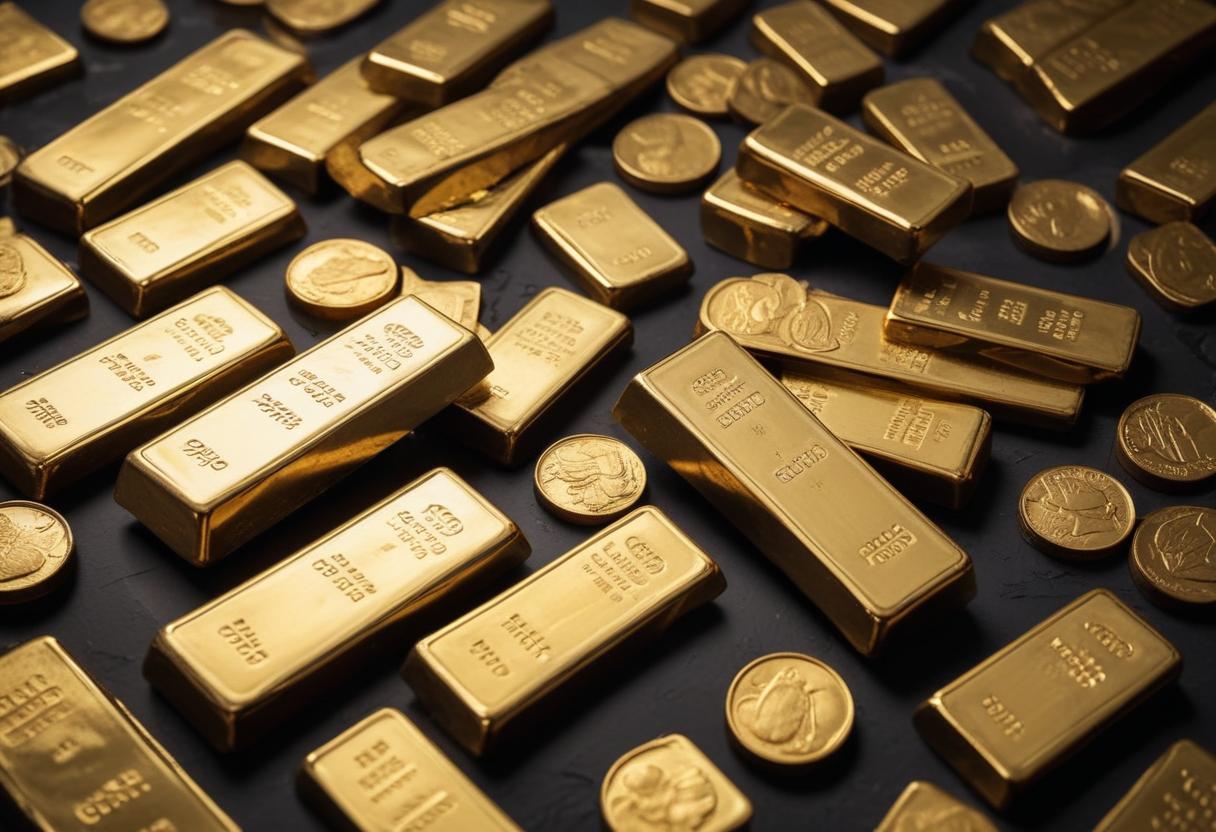5 Stocks to Consider as Iron Ore Prices Stabilise
![]() Ujjwal Maheshwari, November 29, 2024
Ujjwal Maheshwari, November 29, 2024
Iron ore is a cornerstone of the global industrial sector. This precious and versatile metal is a critical raw material for steel production. Over the past few years, fluctuating iron ore prices have created uncertainty for investors, companies, and economies alike. However, recent trends suggest that prices are stabilising, presenting an opportunity for investors to consider stocks positioned to benefit from this phenomenon.
Why Are Iron Ore Prices Stabilising?
Iron ore prices are stabilizing due to the concurrence of a worldwide market supply-demand balance and economic corrections after years of volatility. The market is finding a balance after one heck of a long period of price movements influenced by pandemic-related disruptions, geopolitical tensions, and changes in demand.
China, the world’s biggest iron ore customer, is slowly tempering its consumption of steel after years of intense demand for it to build its infrastructure. At the same time, Australasian iron ore producers have witnessed their operations themselves adjust to current market realities and therefore avoid oversupply while ensuring stable output and production. At the same time, policies to curb emissions of major industrial nations led to more measured steel production and further reduced erratic spikes and troughs in raw material demand.
What Are the Global Effects of This Phenomenon?
Stabilization of iron ore prices will have significant implications worldwide. Economies that rely heavily on exports, such as Australia and Brazil, need predictable revenues to spur fiscal stability. Such stability is crucial to the size and scope of national budgets since it provides governments the ability to plan infrastructure projects and social programs without fear that their revenues will suddenly be reduced.
On the industrial side, producers of steel will have better input cost management which will translate to better price predictability on downstream products such as automobiles, construction materials, and machinery. All this sets the optimism for global trade, as raw material volatility risks are drastically reduced for stakeholders in the supply chain. Additionally, with a stable market, investors can make better predictions and planning, and thus reduce speculative behaviour, thereby increasing confidence in related stocks.
What Caused This Price Stabilisation Now?
Several reasons now seemingly stabilize iron ore prices. The very first factor has to do with the recalibrated economic strategy of China. China’s government, having clipped aggressive real estate development projects, adopted strong environmental regulations around steel mills that reduce their demand for iron ore.
First, major producers in Australia such as Champion Iron, Rio Tinto, and Grange Resources have refrained from oversupply, which is likely to lead to price falls. Third, the easing of COVID-19-related supply chain disruptions restored normal global trade flows and ensured steady supply fluctuations. Lastly, geopolitical factors, such as sustainable growth and diversification of trade partners, reduced price volatility tied to sudden political shifts.
What Are the Stocks to Consider Now That Iron Ore Prices Are Stabilising?
As the price of iron ore is currently stabilising, investors must look out for certain stocks to efficiently capitalise on this trend and simultaneously diversify their portfolio.
Champion Iron (ASX: CIA)
Champion Iron is an iron ore concentrate mining company that produces high-grade iron ore concentrates. Its core operation is the flagship Bloom Lake Mine, which places it at the top of the industry’s producers. This is a class A asset, with iron content in reserves at 66%, far beyond the industry standard. Such product quality attracts premium prices, especially in the big markets of Europe and Asia, which are transitioning toward more environmentally friendly steel production. High-grade iron ore is in demand for its lower environmental impact, aligning with global decarbonisation efforts.
Champion Iron’s financial performance is strong. It recently posted an EBITDA of USD 431 million and revenues of USD 1.5 billion in its latest reporting period. Its solid profitability metrics reflect effective cost management as well as favourable iron ore prices. Champion Iron will remain in a good position to capitalize on stable iron ore prices as it focuses on adding production capacity and developing new projects such as the Kami Project. With Phase II at Bloom Lake in addition to its current expansion plans, the company is expected to increase its production capacity and stand to gain from stable iron ore prices.
Mount Gibson Iron (ASX: MGX)
Mount Gibson Iron is an Australian iron ore producer with a low-cost production focus. Its flagship Koolan Island has very high-grade hematite reserves and will be a reliable supply in the market. Considerable investment has been made in seawall repairs and upgrades in the operation to maintain long-term productivity and cost efficiency. Company strategy has a strong basis on operational efficiency and cash flow generation.
Financially, the company has managed to deliver solid performance in revenues of AUD 240 million and maintains a good cash balance, thereby showing that it has resilience. The management of Mount Gibson has been disciplined with capital expenditure and committed to shareholder returns through dividends, making the company attractive to investors. Stable prices allow Mount Gibson to capitalize on its cost-effective operations for sustained profitability.
Grange Resources (ASX: GRR)
Grange Resources is the largest magnetite pellet producer in Australia. Magnetite pellets are a premium iron ore product suitable for high-efficiency steel production. The group developed a mine, concentrator, and pelletising plant that formed the Savage River project in Tasmania. The produced magnetite is valued for being of higher iron content and low environmental footprint in comparison with hematite, which corresponds to global increasing industrial trends towards sustainable practices.
From the standpoint of cost, Grange Resources has shown a healthy performance in terms of EBITDA at AUD 324 million and revenues at a general revenue of AUD 630 million for the previous year. Producing high-margin products ensures the profitability of the company regardless of fluctuations in prices. Grange Resources would therefore benefit significantly from iron ore price stabilisation as more investment continues to be placed into operational efficiency and exploration. Its premium product offerings and strategic positioning make it an attractive stock for long-term investors.
Fenix Resources (ASX: FEX)
Fenix Resources is the only lean iron ore company on an open Western Australian iron ore portion with a specific emphasis on high-grade direct shipping ore. Its Iron Ridge project has a good position of supply chain-to-port in Geraldton, which significantly reduces transportation costs and increases profitability. The project has a competitive advantage that quickly brings high-quality iron ore to the market.
In Fenix Resources’ last financial year, the revenues stood at AUD 203 million, whereby the underlying operations were cost-effective and the market conditions favourable. The company has managed to maintain a healthy EBITDA margin, which demonstrates its focus on operational efficiency. To return value to shareholders, Fenix has focused on implementing a dividend policy that reflects its strong cash generation. With iron ore prices steadying, Fenix Resources is well-positioned to generate strong financial results, making it an attractive choice for growth-oriented investors.
Centaurus Metals (ASX: CTM)
Centaurus Metals is an emerging entity in the space iron ore, with most operations being based in Brazil, a country with plentiful mineral resources. Even though the company is more significantly known for the success of the Jaguar Nickel Sulphide Project, its iron ore assets also contribute to diversification. The company’s exploration has discovered high-grade deposits that could be very valuable additions to its repertoire.
Financially, Centaurus is still growing. A lot of the capital is going into exploration and project development. Yet strategic location in Brazil would help to capitalize on its proximity to major steel-producing markets. And once iron ore prices stabilize, then Centaurus Metals shall enjoy improved investor confidence with possible joint ventures or partnerships that can accelerate growth. Centaurus provides exposure to both iron ore and critical minerals and for investors willing to take on some speculative risk, it is somewhat of a unique play in the resource sector.
What To Expect From This?
The stabilisation of iron ore prices signals a transformative phase for the mining and steel industries, offering a more predictable landscape for stakeholders. With prices moving away from extreme highs and lows, the market is likely to see increased confidence from producers, consumers, and investors.
Consistency in Revenue for Producers
For Australia and Brazil, iron ore’s most important exporters, stable prices translate into steady revenues. Fiscal policies formulated by the governments in these two countries can be planned much more reliably, as commodity price fluctuations will no longer hit national budgets unsteadily. This stability will also boost long-term investments in new mining projects, infrastructure, and technology, thereby strengthening the growth trajectory of the sector.
Higher Dividends and Shareholder Returns
Regular cash flows are expected to mean higher returns for shareholders. Most producers, such as Mount Gibson Iron and Fenix Resources, are focusing on dividend payouts as part and parcel of the overall value proposition. Levels of pricing ensure surplus profits can be generated to fund the dividend programmes, share buybacks, or reinvestments in expansion projects, further enhancing investor confidence.
Steady Demand From Global Leaders
While China’s consumption of iron ore has peaked, the country is still the biggest iron ore consumer. The stability will enable steel makers in China to make production schedules and control their costs, thereby promoting industrial growth. Additionally, through infrastructure projects, emerging economies in Southeast Asia and Africa are growing in strength, thereby perpetually fueling steel demand and eventually iron ore. This diversified demand base reduces the reliance on any one market, thus leading to long-run price stability. The boom in Related Industries
Iron ore price stability will have a ripple effect on those industries that rely on steel, like the automotive, construction, and machinery manufacturing industries. For instance, stable input costs enable car and construction companies to offer competitive pricing as well as an effective project budget. This predictability spawns growth in these sectors, indirectly giving support to iron ore demand over the long term.
How Should You Monitor Your Investments?
Investors should closely monitor market trends, company performance, and global economic developments to make informed decisions. Keeping an eye on financial metrics like EBITDA, profit margins, and cash flow is essential for assessing a company’s resilience. Additionally, understanding geopolitical and environmental policies affecting the iron ore sector can provide insights into potential risks and opportunities.
Staying updated on industry news and leveraging the expertise of financial advisors or analysts can further enhance investment strategies. Diversification across multiple stocks or sectors is another effective way to mitigate risks while capitalising on market opportunities.
Closing Call
The stabilisation of iron ore prices marks a pivotal moment for the mining industry and investors alike. It creates an environment of predictability and opportunity, especially for companies like Champion Iron, Mount Gibson Iron, Grange Resources, Fenix Resources, and Centaurus Metals, which are well-positioned to thrive in this landscape. By understanding the factors driving this stability, its global effects, and the prospects of key stocks, investors can make strategic decisions to benefit from this trend.
FAQs
- Why are iron ore prices stabilising now?
Prices are stabilising due to balanced supply-demand dynamics, moderated steel production in China, and the easing of supply chain disruptions.
- How does iron ore price stabilisation benefit investors?
Stable prices reduce market volatility, enabling more predictable returns for mining companies. This creates opportunities for investors to achieve steady portfolio growth.
- What should investors consider before investing in iron ore stocks?
Investors should evaluate the company’s financial health, operational efficiency, and environmental risks. Diversification is also key to minimising risks.
- Which companies are best positioned for stable iron ore prices?
Champion Iron, Mount Gibson Iron, Grange Resources, Fenix Resources, and Centaurus Metals are well-positioned due to their strong operations, efficient cost structures, and market strategies.
Blog Categories
Get Our Top 5 ASX Stocks for FY25
Recent Posts
The $3m super tax is coming! If you’re invested in equities, here is how it might impact you
It seems during the next 3 years, the $3m super tax will be officially a thing. Itwas blocked by the…
Northern Star Resources (ASX:NST): The $28bn gold miner that stands above them all
Northern Star Resources (ASX:NST) is by far the largest gold company on the ASX, capped at $28bn as of May…
6 ASX stocks you forgot were listed
Here are 6 ASX stocks you forgot were listed Brisbane Broncos (ASX:BBL) No it is not a mistake. This…


